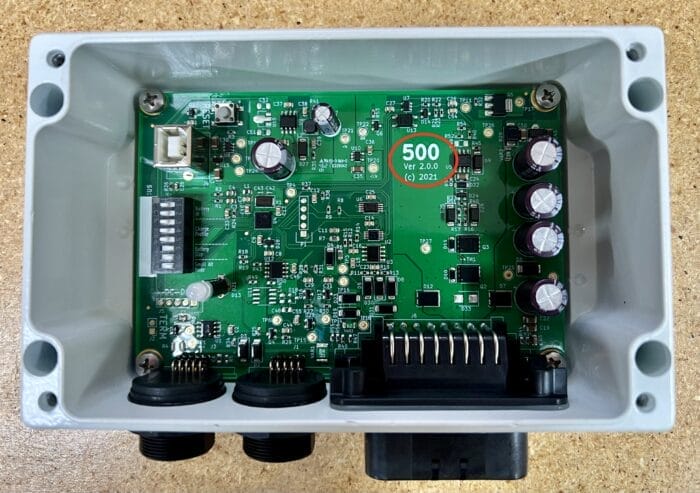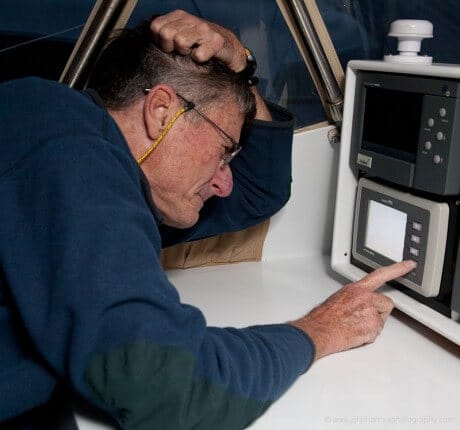
I’m not sure how many times over the years I have beaten some variation of this drum here at AAC. Here and here come to mind, but I’m sure I have written it, or something like it, many more times.
And yet, when a new cool piece of gear comes out, what do we all often do, me included, but get all excited about all the awards it’s won and its cool new features and run right out and buy it.
Hell, I have done this more than once:

Let me see if I can be gentle about this…that’s a really stupid thing to do.
Oops…I guess I kinda failed the gentle test on that one. The good news for me is that, unlike with full articles, my editor does not see Tips before they are published!
Whatever, here’s why buying newly released products, particularly electronics, is…unwise:

This rule is almost universally true.
The first full working version of any new electronic, software, motorized mechanical, etc. device will sorta-kinda do its thing on the lab bench, most of the time, as long as it’s cold and you don’t touch it and the magic smoke stays inside the little black cans. The second version will meet the functional specification, make it through pre-production QA, and be approved for release after a few changes. The early-adopter customer gets the third version, in which 74 bugs are found during the first three months on the market, but since it’s already on sale and there’s a 6-month turnaround to fix the design, make new version 4 boards, test them, and release to production, actual working hardware isn’t leaving the factory until 9 months after launch.
At this point, the channel is already full of 3 months worth of product, and the company can’t afford the financial hit of scrapping or reworking it. Disclosing to the customer that a new, improved, reworked version is now out means that what’s already made will go unsold. So the branding, presentation, etc. all stays the same, the fixed boards are put in, and the model ID is incremented from FN48KE3GHJ to FN48KE3GHK in 5-point font on the compliance label.
So, by the 12-month mark, most of the flaky first-run stuff is gone, and the fixed stuff is starting to show up in stores.
Further iterations after that might be needed to work around component shortages (e.g. a critical chip’s been discontinued) or regulatory changes (stricter RoHS, EMI, etc.) but, in general, engineers’ and technicians’ confidence in an electronic or mechanical product starts to go up dramatically between 1 and 2 years after it first went on sale.
And so comes the question “but how are new cellphones & laptops reliable right off the bat?” It’s because they aren’t new. They’re almost always very minor iterations on an already-working design with already-proven components, being marketed as new. Don’t mistake “marketed as new” for “actually new” or vice versa.
Hi Matt,
Thanks for the fill. Your scenario is pretty much exactly what I have seen. That does bring to mind another reason I like the Wakespeed WS500 so much: Al, being the boss, and an engineer, instead of a marketing person, has always been much more open about this kind of thing. Note the clear Version 2.00 and date printed on the mother board in the shot above, instead of some obfuscated code.
That about sums it up.
only exception are very high volume consumer electronics (and that not all the time).
had no problems with latest iPhone and iPad for example
To what extent do you reckon the same logic applies to boats?
I hope it’s not too provocative a question. I think it’s fair, it’s certainly one I’ve been mulling over for the last few months
Hi Charlie,
Not provocative at all, and certainly one we must address for the A40.
Hi Charlie,
Absolutely it applies to boats. The general rule is don’t buy one of the first five hulls of a new model run. This is why I have always wanted to see a sailing prototype for the Adventure 40 so we can get the bugs out on that boat.
That said, in some cases buying an early boat can be good. For example if the builder prices lower and is willing to spend more time getting the boat right after launch, than with later boats. The early buyers of Boreals did very well in this way.
It definitely applies, but it’s not as straightforward.
All of those factor into the calculation when you’re assessing the risk of getting any new boat, and especially if you’re getting a custom one or a first-five serial number of a new production one.
There are builders whom I’d trust to get things mostly right, and to re-work what’s not right, on the first hull of something new.
And there are builders whom I’d trust to screw up the 94th hull of something they’ve screwed up 93 times previously.
Hardware and software are very much the same. Build it or code it, get it out the door, and move on.
Vaperware and Crowdfunding sites (Kickstarter, Indiegogo, and GoFundMe) have become a normal part of new product development.
I am a believer in John’s thinking. Such systems have no place on a cruising boat.
If you can’t help yourself, play with them at home. Test them out at the marina if you must. Then remove them and go cruising. When you get home, the product will be available in a new version. If you are lucky, you may even have a new replacement part waiting. (Don’t hold your breath for a replacement.) Matt has outlined the evolution time frame and the economics of being a first-in-line tester.
Though I have way too much electric and electronic stuff, I generally try to avoid it altogether. Considering that I have been staring into computer screens way too much over the last few decades, the last thing I want to do on board is to stare into a computer screen.
so I end up with a curious mix of items, while others appear to be missing …